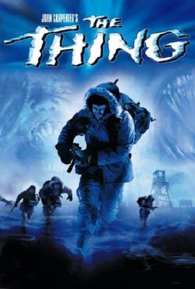
The effectiveness of the setup is universal. Put a few people in a tightly enclosed space with no help available for miles around. Then tell them that one or maybe more than one of them is a murderer. Then watch the suspense unfold as they either work together, or try to destroy each other. That the murdering entity was an alien monster didn’t really matter. The paranoia unleashed and the limits to the information conveyed create the suspense way before the entrance of any creature ever does. That was the basic setup of John Carpenter's 1982 sci-fi cult classic The Thing.
Nearly three decades later, and Hollywood in a moment of intelligence, decides that since there is no way to surpass the stature of the original in the hearts of fans, to make a prequel set directly before the events of the 1982 version. To its credit, this prequel holds true to the look and feel of the original, right down to replicating the font that came with the original’s titles. Its focus is on the Norwegian team that the American team found dead in the original. Being Hollywood, there is still the need for an American heroine, Kate Lloyd, here played by Mary Elizabeth Winstead. Kate, as the lone American scientist accompanying a Norwegian research team investigating a strange lifeform buried under the Antarctic ice, finds herself at odds with the headstrong Norwegian team leader, Sander Halvorson (Ulrich Thomsen). All hell breaks loose when the lifeform, an entity capable of invading human bodies and transforming into the form of its host before attacking and feeding, escapes from its icy prison and begins to take the form of the team, one by one...
New director Matthijs von Heiningen honours much of the original and the source material by keeping the focus largely on the suspense of wondering who the space creature, the titular Thing, could have infected, and building on the paranoia that made the original so effective. Heiningen’s missteps are with his use of effects, which occasionally look too contemporary to capture the feel of the 80s original, and a very unnecessary denouement that ruins the film’s supposed feel of mystery and paranoia. The end result remains gripping and very much true to the spirit of John Carpenter’s original, right up to a dark, ambiguous ending, but some poor artistic decisions and the lack of remarkable performances will most likely ensure this version becomes a footnote next to the original in the annals of genre cinema.












 Printable Version
Printable Version











Reader's Comments
Be the first to leave a comment on this page!
Please log in to use this feature.